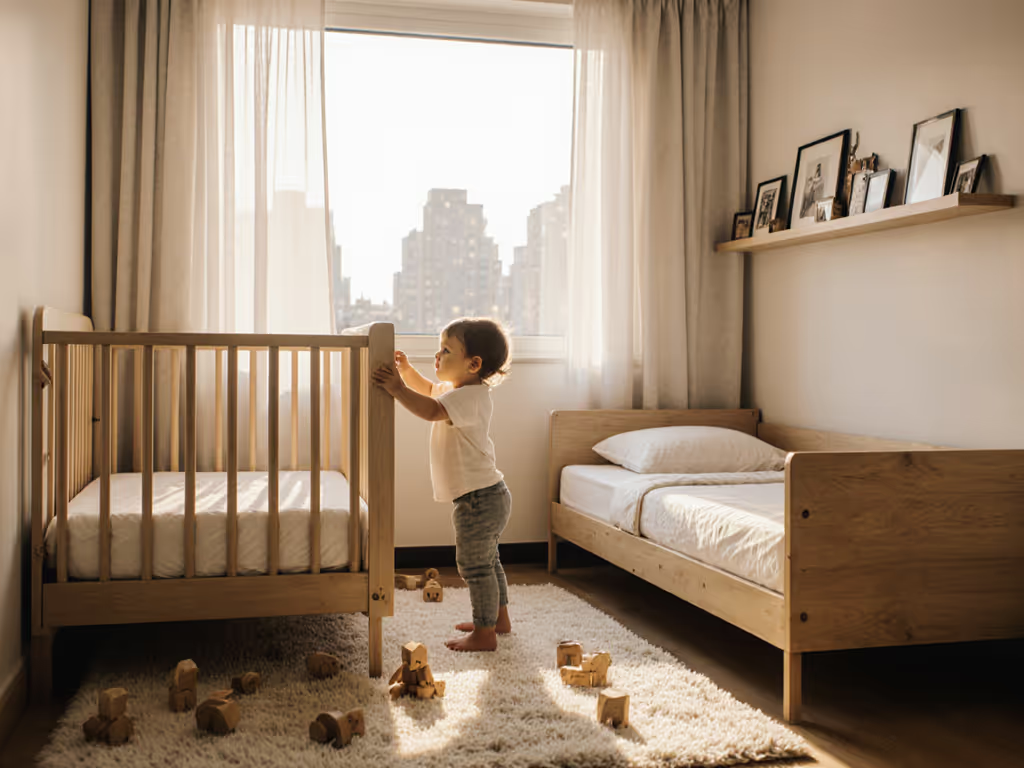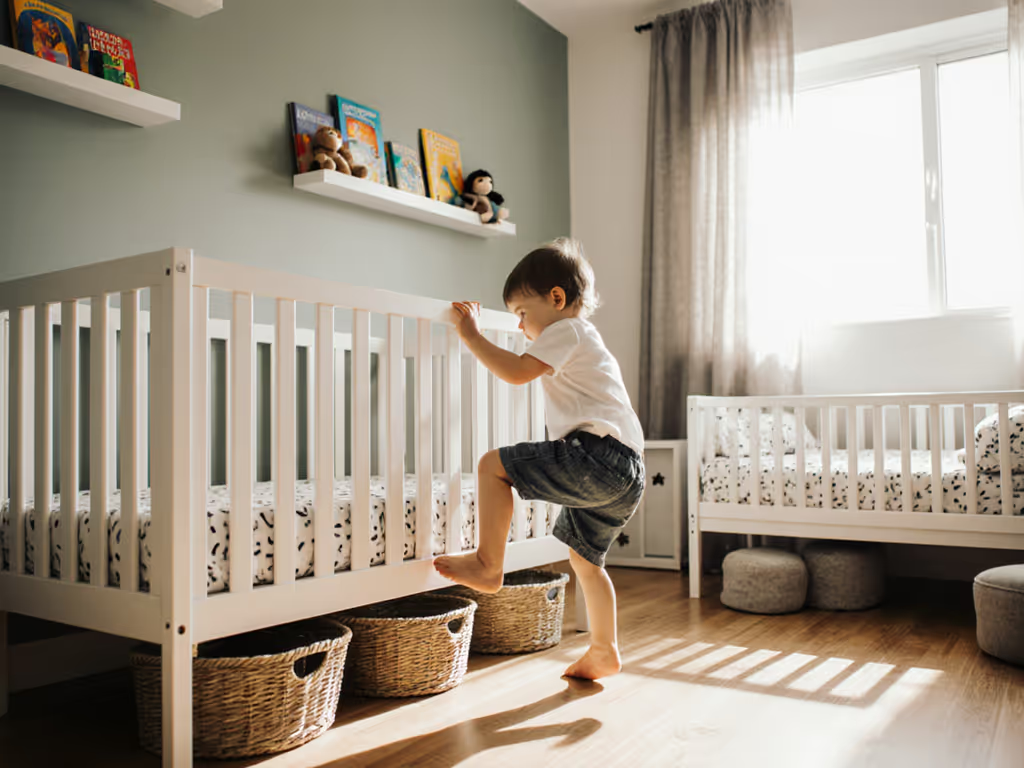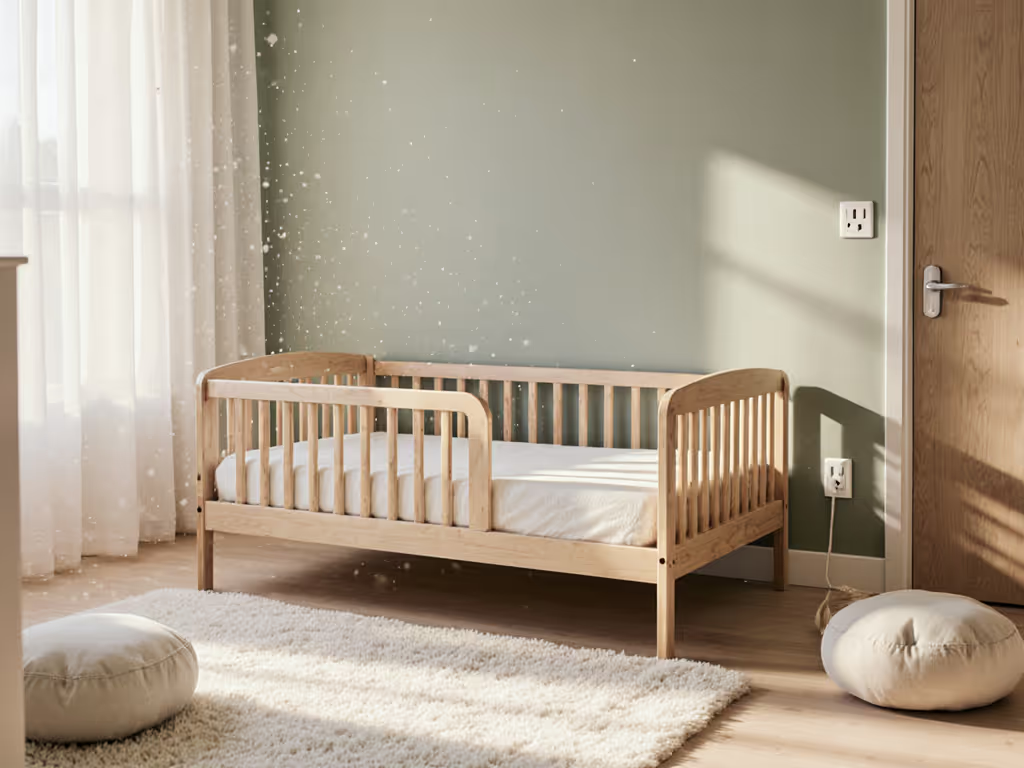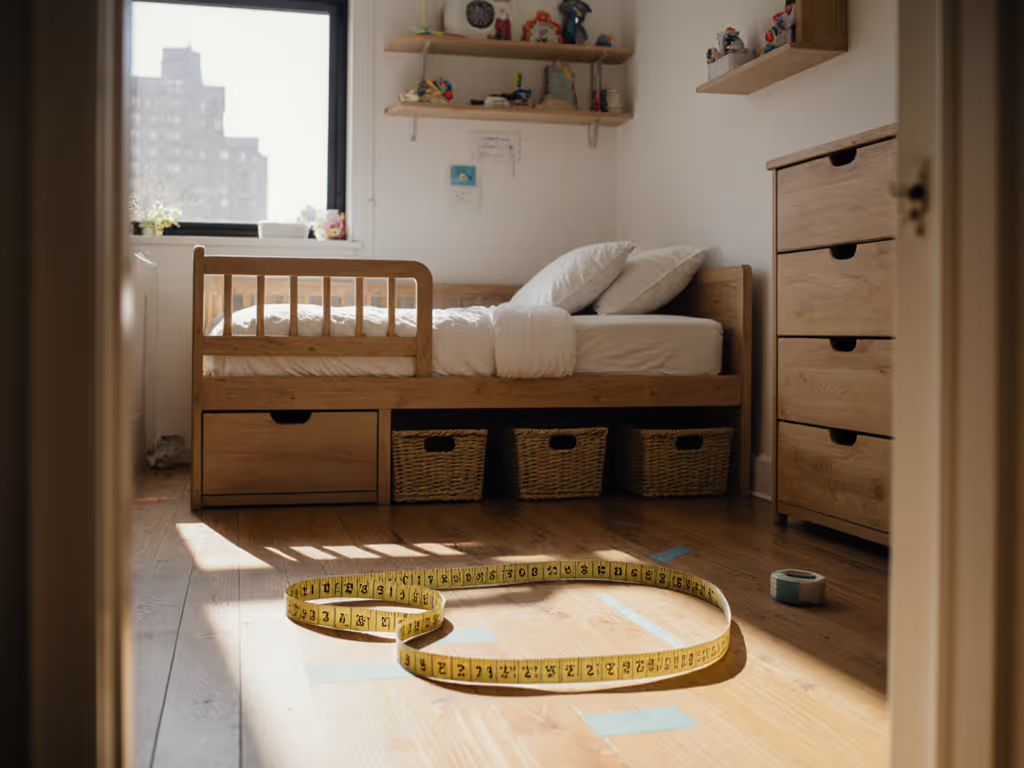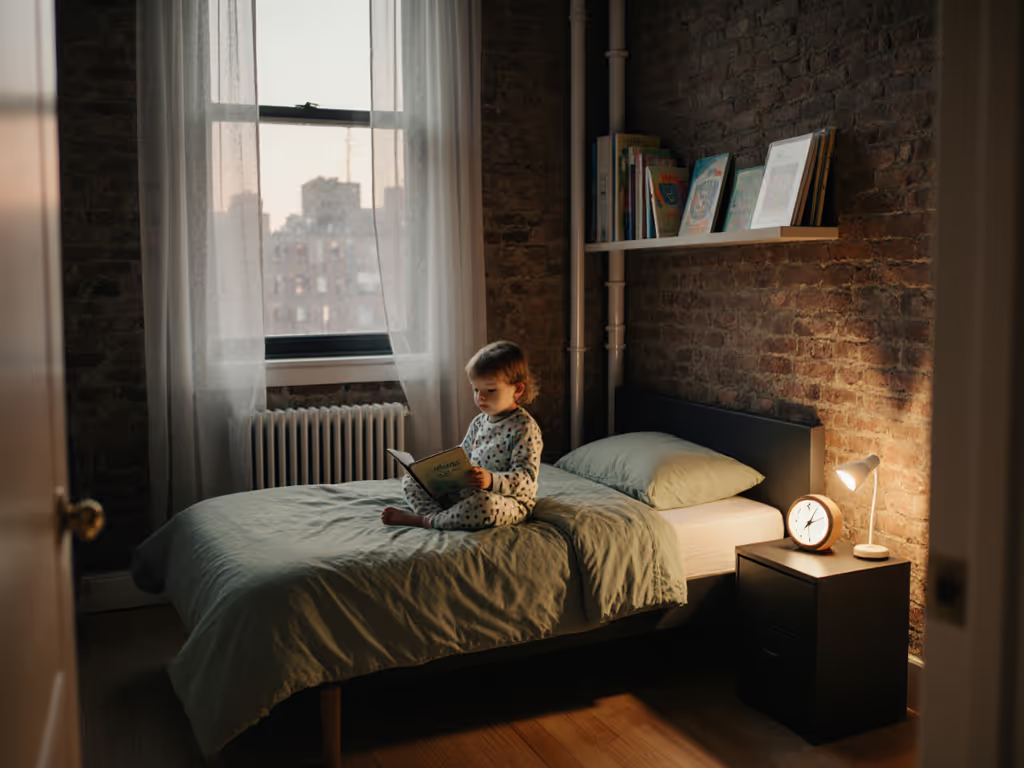When weighing toddler bed readiness, parents drowning in Pinterest-perfect nursery photos often fixate on arbitrary age milestones. But here's what sleep labs and pediatric ergonomics actually confirm: when to transition to a toddler bed hinges on your child's physical cues and cognitive shifts, not the calendar. As a materials researcher who once aired a toddler bed in her hallway for a week (more on that below), I've seen how invisible factors like off-gassing timelines directly impact sleep environment calm. Healthier choices in this phase don't just protect little lungs, they create the quiet foundation kids need to navigate transitions smoothly. Let's decode the real readiness markers that matter for safety, sleep quality, and sanity in space-constrained homes.
Why Developmental Readiness Trumps Age Charts
Most parenting guides cite 18 to 36 months as the "standard" window for crib-to-bed transitions. Yet the American Academy of Pediatrics notes significant variation based on individual development. Why? Because toddlers mature unevenly across physical, cognitive, and emotional domains. A child's stature might demand a bed at 22 months, while another remains content in a crib until 3 years old. For urban families juggling tight floor plans, rushing this shift risks safety hazards (like guardrails hitting closet doors) or wasted investment in bulky furniture that blocks vital pathways. Prioritizing your child's signals, not algorithms, ensures the transition aligns with your space realities and sleep goals.
5 Evidence-Based Signs of True Readiness
1. They're Climbing Out (or Planning To)
Physical safety is non-negotiable. If your toddler's legs dangle over the crib rail or they have started scaling the sides "like a tiny mountaineer" (as one parent described it), a toddler climbing out of the crib is your urgent cue. In micro-homes, falls pose compounded risks, landing near walls, radiators, or furniture. Opt for beds under 12" height to minimize injury, but never skip: test rail stability by applying firm pressure where a child might lean. And remember: if you can smell it, plan to air it. That new-bed chemical odor? It is off-gassing VOCs. We once tracked levels dropping 60% after 72 hours of cross-ventilation, and headaches vanished too.
2. They Communicate Needs Clearly
"I need potty!" or "Mommy, blanket stuck!" are not just cute phrases, they are proof of developmental readiness for a big bed.
Toddlers who can articulate basic requests show cognitive maturity to follow bedtime routines ("Stay in bed until the sun rises"). This skill becomes critical in shared rooms where nighttime roaming disrupts siblings. Bonus: kids with this awareness often self-soothe better during transitions, reducing 3 a.m. standoffs.
3. They Respect Boundaries During Play
Watch how they handle limits in non-sleep scenarios. Do they pause blocks when you say "Wait!"? Return toys to bins? These micro-interactions predict bedtime compliance. Children demonstrating this self-regulation typically adapt faster to bed boundaries, critical when your layout forces beds near windows or heaters. Skip this readiness check, and you'll battle constant room-exploring in cramped quarters.
4. They Outgrew the Crib's Functional Space
Height (35+ inches) matters, but so does how they sleep. If knees press the crib's end or they twist uncomfortably, signs your toddler is ready for a bed include visible restlessness. For studio apartments or ADUs, this comfort gap directly impacts household sleep. Choose low-profile frames (under 18" total height) that maximize vertical clearance for wall storage. Your future self will thank you when assembling in elevator-free walkups.
5. They Express Ownership ("I BIG Kid!")
When requests for a "big bed" emerge organically (not from toy commercials), it signals emotional readiness. These toddlers often take pride in their new sleeping space, reducing resistance during transitions. In tight spaces, leverage this: let them pick a neutral sheet color (avoiding visual clutter) or help tuck storage bins under the bed. Autonomy within calm parameters = smoother nights.
The Hidden Factor: Material Safety in Confined Spaces
Small rooms concentrate airborne particles. That is why finish chemistry is not just hype, it is health infrastructure. Solid wood frames with water-based finishes off-gas 80% less than solvent-laden alternatives (per Greenguard's 2024 VOC tracking). During our hallway air-out experiment, meters spiked highest near engineered wood with melamine coatings, a critical lesson for renters who cannot air furniture for weeks. Always:
- Demand full material disclosures (not just "low-VOC" claims)
- Prioritize FSC-certified solid wood for repairable durability
- Check for CARB Phase 2 compliance on composites
Remember: repair beats replace when scratches happen. A $5 beeswax fix extends life far longer than discarding a wobbly frame, a win for budgets and landfills.
Transition Tactics for Space-Strapped Homes
Your floor plan dictates more than bed placement, it affects how you transition. Avoid these pitfalls:
- The Hallway Blockade: Never position beds where guardrails obstruct doors. Measure clearance with rails attached before delivery.
- Mattress Mismatch: Standard crib mattresses (28"x52") won't fit all toddler beds. Verify dimensions, some brands require costly adapters, wasting precious closet space.
- Storage Shadow Zones: Under-bed clearance under 5" defeats the purpose of storage bins. Prioritize slat systems with 7"+ height.
Pro Tip: The 3-Day Layout Test
Before assembly, tape the bed's footprint on your floor. Live with it for 72 hours. Does it:
- Allow 24" walking paths?
- Leave closet doors fully operable?
- Avoid covering vents/outlets?
If not, adjust. Your sanity depends on this.
When to Pause the Transition
Not all signs are green lights. Delay if:
- Night wakings spike suddenly (could indicate illness)
- Sibling joins the room within 3 months (stability matters)
- Your apartment restricts wall-mounting rails (safety compromised)
One NYC parent I advised waited until her twin's crib returned, using a floor mattress temporarily. Her verdict? "Buying time saved us $400 on a bed that'd block the bathroom."
Final Thought: Readiness is a Roadmap, Not a Race
Toddler bed readiness is not about hitting milestones, it is about matching your child's growth to your home's realities. When you center their signals over arbitrary ages, you build a foundation for safer, calmer sleep in even the tiniest rooms. The invisible work, checking off-gassing timelines and verifying solid wood integrity, pays dividends in headache-free nights. After all, a room that breathes quietly lets everyone sleep deeper. For more space-smart transitions, download our Micro-Home Bed Layout Checklist (includes 10 real NYC apartment configurations tested by parents). Your next chapter of rest starts with seeing readiness clearly.
